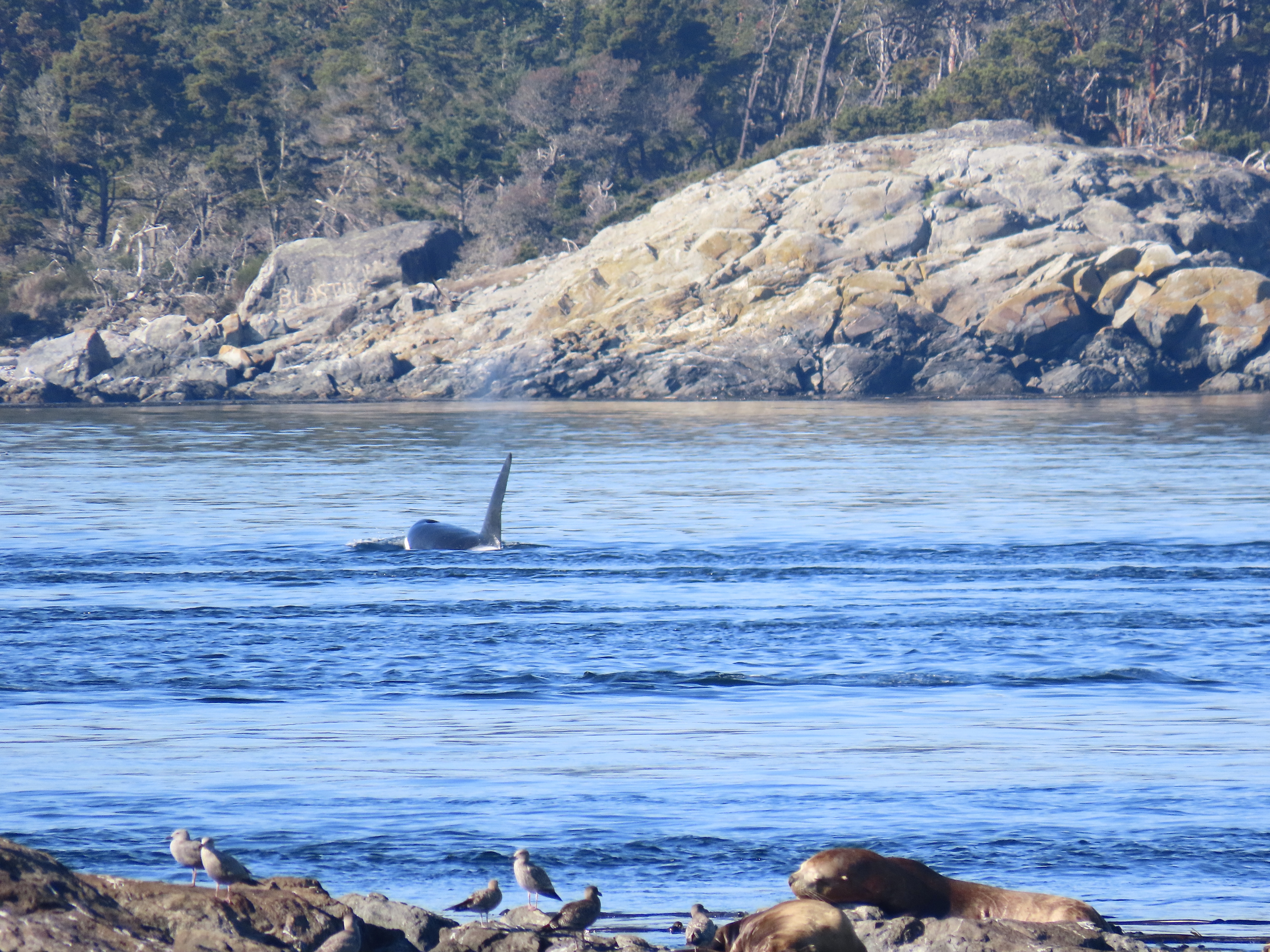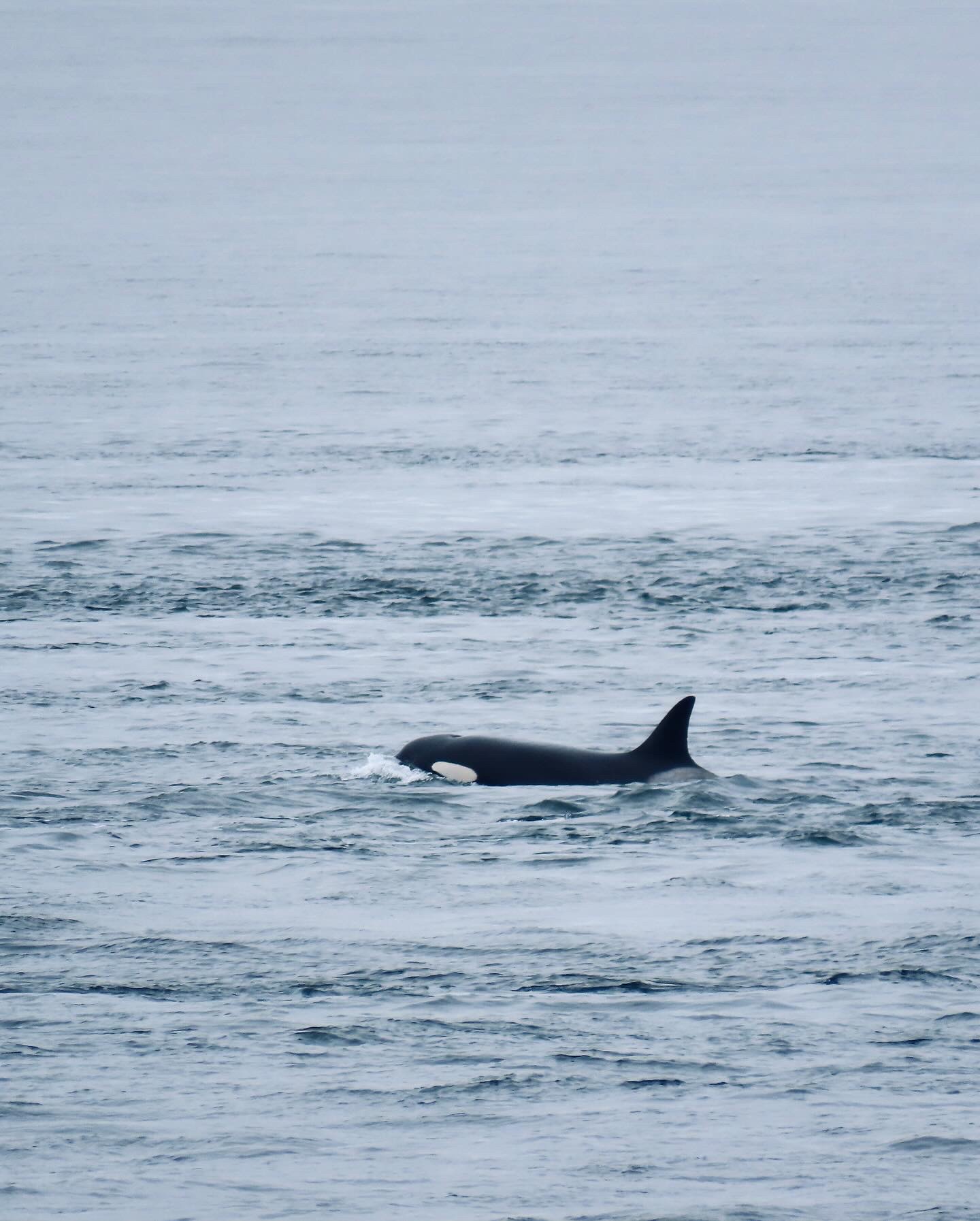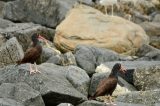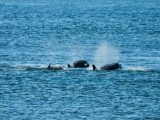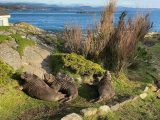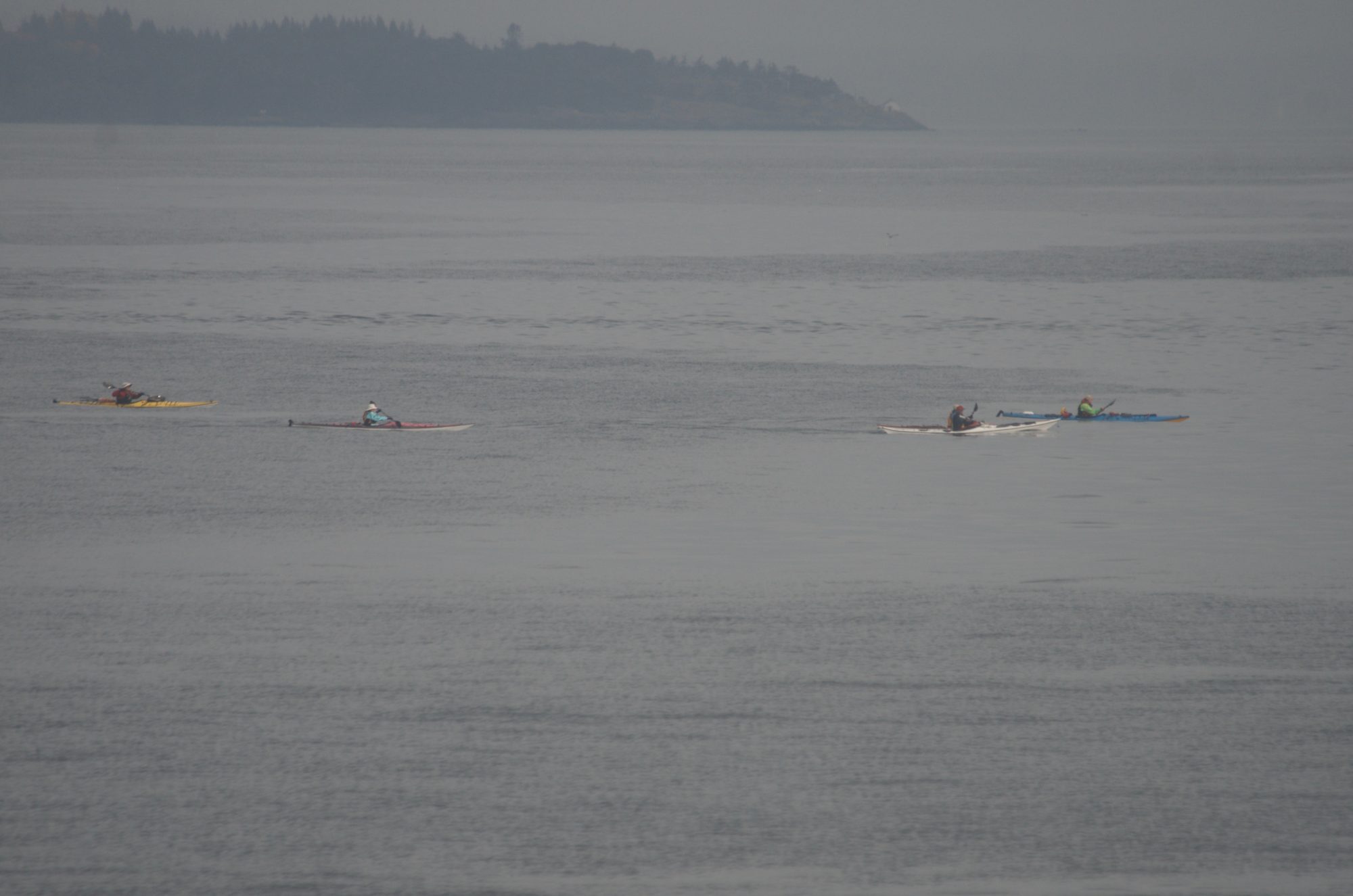Everyone has a favourite animal, maybe its a dog or a cat or maybe its something elusive that you have a slim chance of ever seeing like a platypus. For some people, especially those in the marine mammal field it goes even deeper than that. We have specific animals within a species that we hope to one day see. For me I have two:
CA216C1 Frosty – an all white killer whale that travels between California and BC
T063 Chainsaw – a transient killer whale who visits the Salish Sea for roughly 2 weeks every spring and is recognized by his large jagged dorsal fin
Don’t get me wrong, the list is longer than that…I’ve yet to see K or L pod (Southern Resident Killer Whales), and I wouldn’t be opposed to seeing a narwhal or a leopard seal somewhere in the world one day, but as far as specific animals go – Frosty and Chainsaw are the top of my list.
Around mid afternoon I heard some chatter over the radio and spotted a few slow moving ecotourism vessels on the outskirts of the reserve which usually means there are whales nearby. I grabbed my camera and ran outside to find the man, the myth, the legend…Chainsaw! I almost didn’t believe it at first but that dorsal is hard to miss! He was travelling with at least 4 other whales including a youngster.

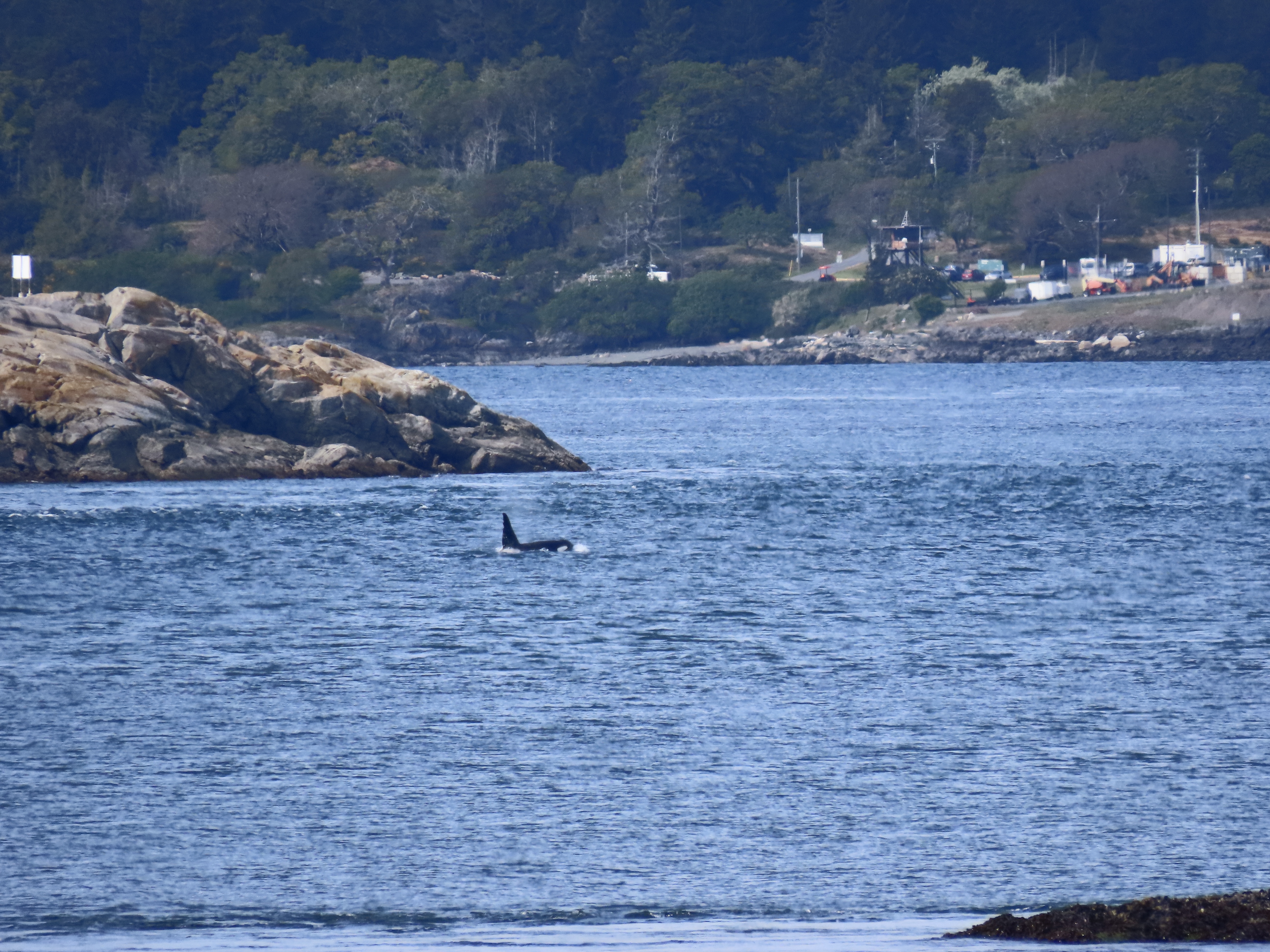
Not only have I been fortunate enough to see killer whales twice since my arrival yesterday afternoon but also my bucket list whale! I think this means that this Race Rocks trip will be a pretty spectacular one, I can’t wait to see whats to come. At this rate I should set my sights high, maybe a blue whale?
Now that I’ve shared my celebrity encounter, on to the rest of the day!
Today was animal census day and I proved myself wrong (see yesterday’s blog post) by spotting more pigeon guillemots than I’ve ever seen before. I did not however, see any turnstones today. Ollie was hauled out on Middle Rocks this morning but I heard over the radio that he was possibly near Swordfish Island this afternoon. Last but not least, I spotted my first whimbrel and hope to see more!
-

-
One of these things is not like the other…or should I say otter?
-

-
California vs Steller
-

-
No such thing as too many chins!
Animal Census:
Elephant seals: 4 female
Steller sea lions: 14
Harbour seals: 68
California sea lions: 19
Sea otters: 1 (Ollie)
Killer whales: 5 (T65s and T63s)
Gulls: 264
Canadian geese: 7
Oyster catchers: 10
Pigeon guillemots: 106
Eagles: 3 (2 adults, 1 juvenile)
Cormorants: 17
Savannah sparrow: 3
Whimbrel: 1
Raven: 1

Thankfully we don’t count bivalves in the census!!
Vessel Census:
1 private
4 ecotourism – far less today!
Weather:
-
- Sky: Blue and clear
- Wind: High of 11 knots, Low of 5 knots
- Sea: Calm
- Temperature: Low 8oC, High 12oC
** All wildlife photos taken at the furthest distance possible, and may be cropped to improve detail! **


